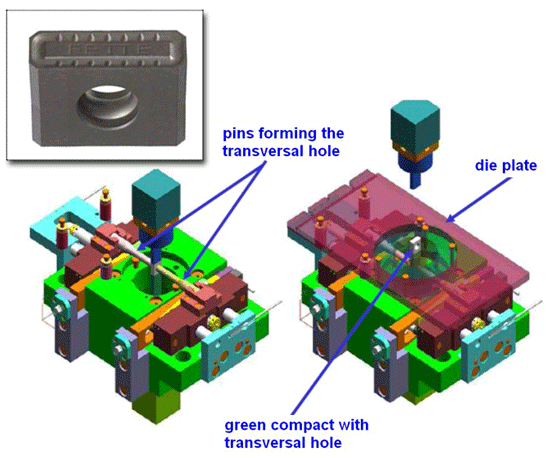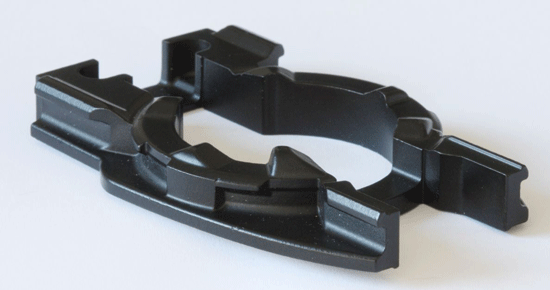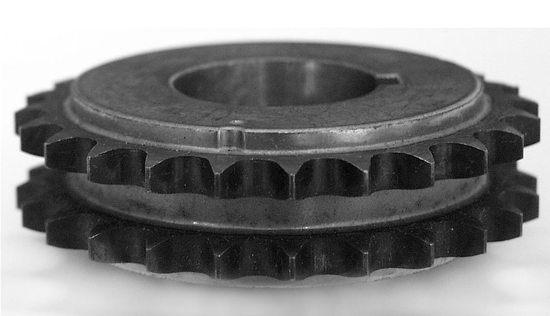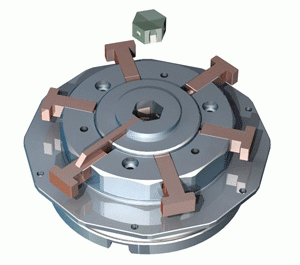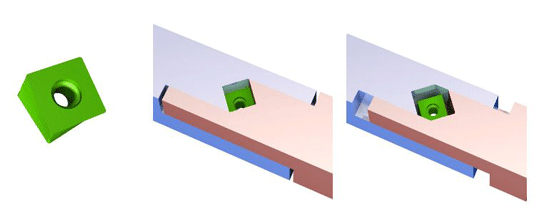2010 Hagen Symposium Reports: Powder compaction with transversal axes
In accordance with this year’s event slogan “Shaping – Chances for Powder Metallurgy”, many authors at the Symposium in Hagen focused on the various shaping processes of PM technology. Among these, axial powder compaction naturally takes a leading role.
The freedom of geometrical design in axial powder compaction is generally limited by the fact that pressure is only applied in one direction, the axis of compaction. As a consequence, undercuts and lateral through holes cannot be designed on the green compact and must be machined after pressing. In recent years this general rule has been overcome.
As the software of modern servo-hydraulic presses offers sufficient features to control additional drives independently, it is possible to develop techniques for transversal movements of tool elements with the software also allowing control of robotic arms. This creates new design options for press-and-sinter PM parts.
A relatively simple example is shown in Fig. 1. A part with a transversal through hole is pressed in a tool with two transversal pins which are entered into the die cavity before the powder is filled in and stay in their position during compaction. Before the part is ejected, they are withdrawn sideways. It is evident that this principle requires a very exact control of the punch and die movements, and that the transversal hole must lie in the ‘neutral zone’ where the powder is practically not offset during compaction and where the lowest density is achieved.
In a similar way it is possible to press undercuts at the sides of a part. Two examples of ferrous sintered parts are shown in Figs. 2 and 3. Both parts are produced without any machining operations. The chain sprocket is pressed, sintered and induction hardened.
The tooling concepts behind these solutions were presented by Paul Zbinden of Osterwalder. Most of the techniques he described were developed for the hardmetal industry. In the advancement of compaction technology the hardmetal industry is always one step ahead of the ferrous PM industry. This is because the compacting pressures for hardmetal compacts are only one third of those for PM steels. Therefore, the forces acting on the tooling elements are much lower and tools for steel parts must be designed more rigid and with higher strength.
Fig. 4 shows an imaginary die for a hexagonal hardmetal compact. It features various transversal elements which can form through holes, undercuts or partial elevations at the side of a compact. The design concepts of the individual transversal elements are shown in Fig. 5. The transversal elements are introduced into the die cavity before the powder is filled in and withdrawn after the powder has been compacted.
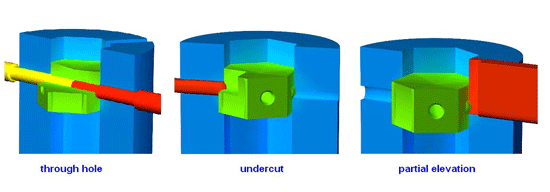
Fig. 5 Tool design concepts for shaping transversal through holes, undercuts and partial elevations on green PM compacts (courtesy Osterwalder)
Another tooling concept for more flexibility in part design is the split die as shown in Fig. 6. The die is not only divided horizontally, but also in the vertical direction, at least in the upper half. In addition to the greater design flexibility, the split die concept reduces the ejection forces and thus minimizes the risk of cracks in green compacts. The transversal axis technology can be integrated into multiple platen toolings.
Paul Zbinden’s conclusions are that fundamental achievements in shaping more complex sintered components have been made in recent years. Integrated in modern multiplaten toolings and clamping systems for fast tool change, the competitiveness of PM manufacturing over other technologies, such as machining operations and investment casting, is enhanced. High accuracies of positioning and repeatability up to ±0.002 mm can be achieved to minimise secondary operations.
Close cooperation between component, tool, adaptor and press designers is of great importance in this process. In particular, if the joint development of a new family of components is accomplished with this technology, chances are high for both technical and commercial success.
Trends and Innovations in Powder Compaction Presses and Die Sets
View our extensive report on powder compaction as featured in the 14th Edition IPMD 2010-2011
• View PDF report
News | Articles | Market reviews | Search directory | Subscribe to e-newsletter



